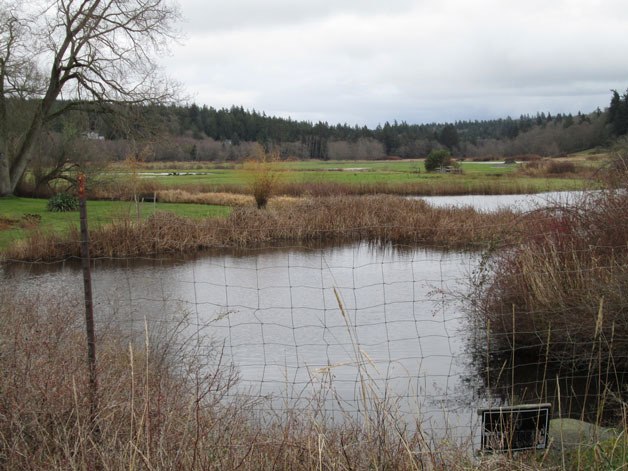Three of the seven environmental-protection issues in which a quasi-judicial board found Island County lacking can be resolved with minimal effort, while four others require more research, the county’s principal planner said in a memo earlier this month.
The Island County commissioners recently agreed to use a Dec. 9 memo from Brad Johnson to guide them in fashioning a status report to the state’s Growth Management Hearings Board on how the county is complying with an order the Hearings Board issued this summer. Commissioner Helen Price Johnson said the status report would be submitted on time to meet a Dec. 15 deadline.
In its order, the Hearings Board found that seven of county’s fish and wildlife habitat protection provisions failed to meet the requirements of the Growth Management Act. Johnson’s highly detailed memo suggested that:
• One definition of “reasonable use,” a key phrase, be replaced with another that has already withstood an appeal before the hearings board.
• Removal of beavers and their dams in an emergency can be addressed by an exemption from protection requirements, and in a non-emergency situation can be addressed as a permitted alteration.
• Rights to “existing and ongoing farming” that may impinge on ecologically critical areas and that expire after five years of inactivity should not be extensible beyond that time, or a specific extension length should be determined.
Addressing issues that will require more research, the memo also proposed that:
• The county’s planning department consult with the state’s Department of Natural Resources to determine whether a buffer is required around the state-designated Naas (Admiralty Inlet) natural-area preserve.
• The county create a list of plants identified by state or federal law as threatened, endangered and sensitive and move to protect them.
• The county determine which ecologically intact remnants of prairie and oak woodlands remain and what protection they are afforded by current regulations.
• The Western toad, which was formerly believed to be absent from Whidbey Island, be protected, possibly through a biological site assessment and a habitat-management plan. Creating adequate protection may impose additional restrictions on development of Western toad habitat, the memo said.
The county was required to review and update its fish and wildlife habitat conservation regulations in 2005, but it failed to act until watchdog group Whidbey Environmental Action Network, or WEAN, obtained an order from the Hearings Board in 2013, that group said.
The commissioners have pushed back against WEAN and the Hearings Board in this matter. Commissioner Rick Hannold has said the litigation is derailing the county’s planning efforts, while Commissioner Jill Johnson has said the Hearings Board is “way out of line.”



